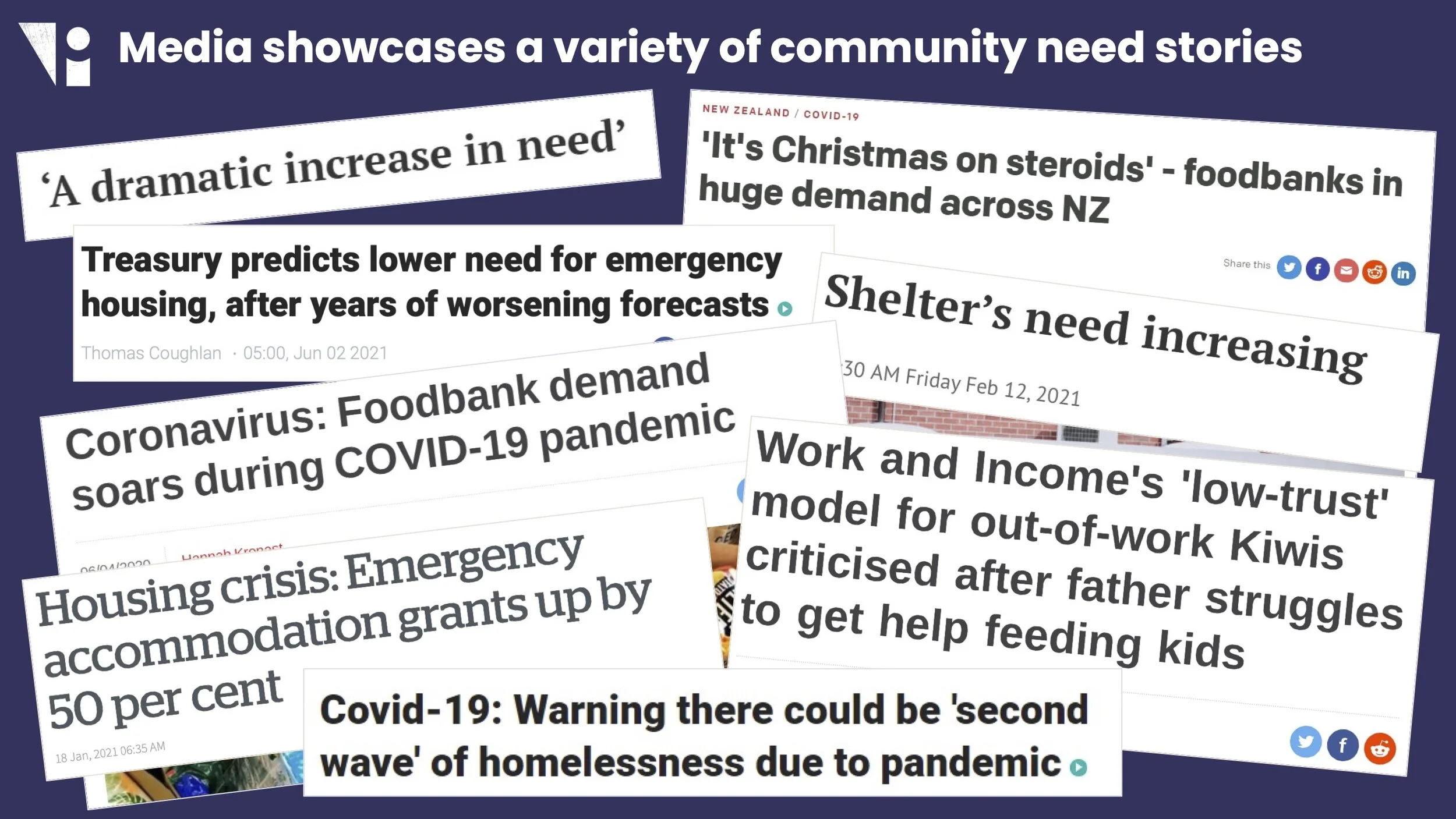Special Needs Grants ... Monitoring impact
Throughout this journal series we have explored community need through the lens of SNG data from both publicly available sources and Official Information Act requests from MSD.
We hoped by collecting and analysing data, we might help organisations gain some insight to effectively serve their communities and prepare for the future. What we discovered is that national, regional, and local trends paint very different pictures, and that the media sometimes illustrates a different story again. These conflicting accounts suggest that SNG data is just one indicator of community need. So how do we get the full picture?
If you consider the sheer number of community groups working to address community need, there is potentially a goldmine of local information that could help ensure that services are developed and delivered effectively at the neighbourhood level. Data from MSD combined with these insights could provide a much better understanding of where and how to effectively deploy assistance.
At Planalytics, we are big believers in insight informing action. We recognise that community need is an intricate, integrated issue that is difficult to measure. As previously discussed, we have faced some hurdles in terms of accessing consistent data as well as Wairarapa-specific data over the past few years. But what we have found has enabled us to identify and present trends over time, discovering interesting patterns across the motu. For example, spend on SNGs has increased nationally year on year. This got us thinking, what has the government done to monitor and/or evaluate the efficacy of the SNG programme?
MONITORING IMPACT
MSD generates a Monthly Benefits Update which includes some SNG data, for example, a breakdown of food SNGs by ethnicity. This is a powerful tool in highlighting the volume of need within our communities but does it tell us how effective this or any type of assistance is in alleviating need?
An evaluation we found tucked away in the bowels of the internet made a number of recommendations to improve the efficacy of the Special Needs Grants programme. This included reducing the number of SNGs that have to be paid back to MSD, to curtail spiralling client debt. However, this was published in 1993! Tiff recently attended an MSD workshop where attendees made it clear that client debt remains an issue nearly 30 years on. It begs the question, how often are recommendations to improve the impact of measures to alleviate need acted upon, and how is progress monitored?
SO, HOW WOULD WE APPROACH MONITORING IMPACT?
To better understand the complex landscape of community need and whether current systems are effective, we believe you can’t underestimate the power of considering both quantitative and qualitative data. For example, speaking to those working on the front lines of community groups yields invaluable information about demand, response and gaps in resource. Engaging with those in receipt of assistance helps understand the emotional, physical and financial toll that being in need can take and the benefits of aid received. One of the most impactful examples we’ve found recently that does exactly that is The Family 100 Project.
We also think that there are a number of other key principles when looking at monitoring impact, for example:
Ensuring data is collected consistently over time and is readily available at a meaningful spatial level.
Creating an effective reporting mechanism so trends can be tracked and voices can be heard.
Developing metrics to enhance reporting value and allow for meaningful interpretation over time
Communicating findings via robust and visually engaging reporting channels (such as a simple dashboard), that encourage stakeholders to discuss and comment.
We wonder if this type of monitoring was utilised, could councils, iwi, and other stakeholders be more equipped to address the needs of their communities?
THE END…
Reflecting on our five-part SNG series, we believe to truly tackle community need, close monitoring and evaluation of current systems is critical to informing positive change. The complexity of the issue and the unique character of each community means that a one-size-fits-all approach is not the answer. A positive consequence of the events of the past two years is that it has brought community need issues to the forefront of government and public discourse. We hope that this series has sparked some ideas for what we as members of the community, businesses, whānau and individuals can do to support those in need and promote positive change.
Tangata ako ana i te kāenga, te tūranga ki te marae, tau ana
a person nurtured in the community contributes strongly to society.


